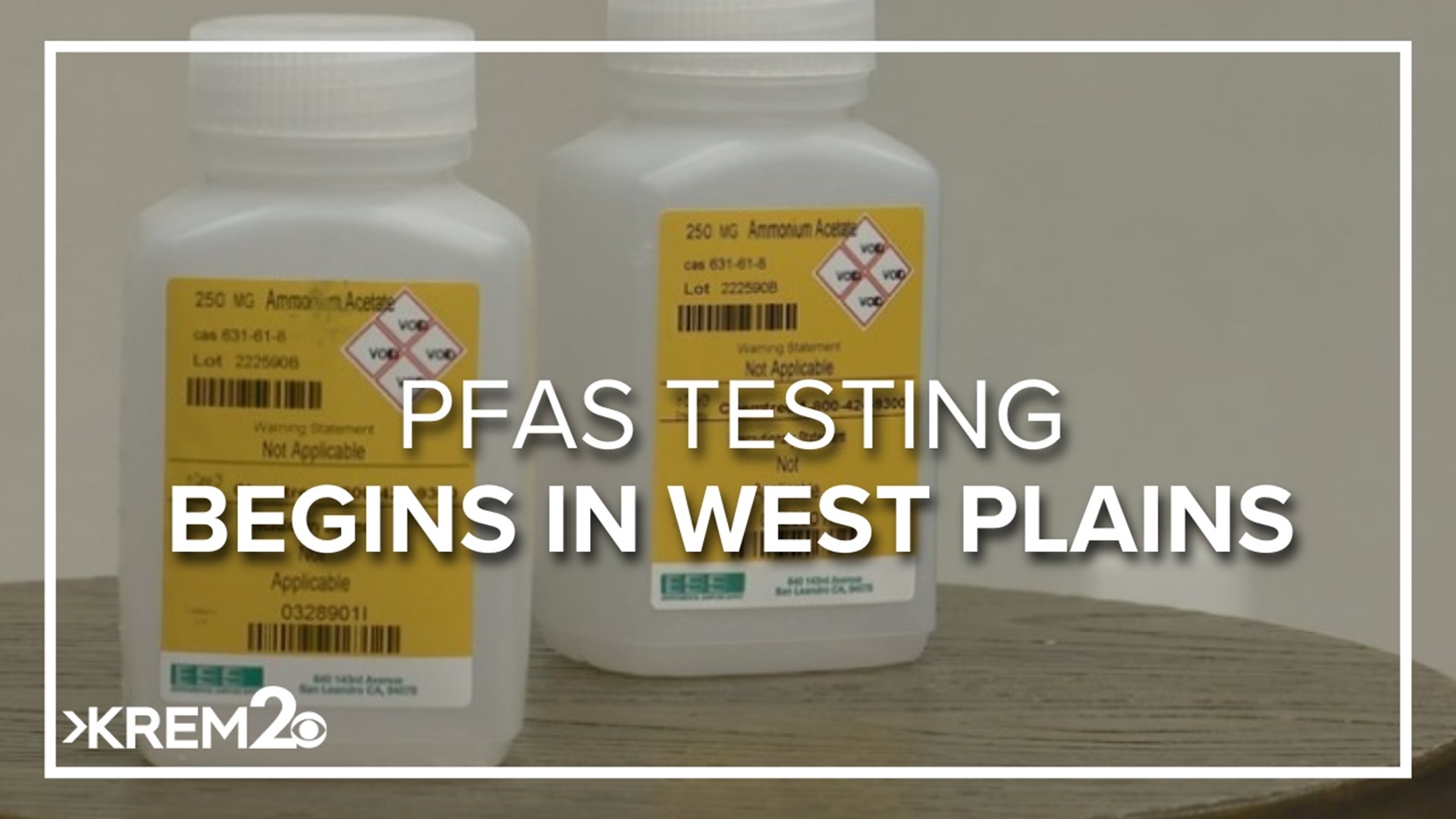AIRWAY HEIGHTS, Wash. — This week, crews from the Environmental Protection Agency (EPA) began testing drinking water in wells across the West Plains in an area now dubbed the "priority sampling area."
It's been a long time coming for many residents, some of whom tell KREM 2 News they've already had their well water tested at their own expense.
The concerns about the drinking and groundwater in the West Plains area of Airway Heights began seven years ago after contamination from PFAS chemicals was discovered near Fairchild Airforce Base. In 2023, the Washington Department of Ecology began investigating similar contamination near the Spokane Airport.
PFAS, a group of so-called forever chemicals, was used in firefighting foam used to control petroleum fires and during drills.
The EPA's free testing allows homeowners in the sampling area east and northeast of both sites to find out whether their water tests above the state's recommended safety levels.
"Our lab will analyze the samples and provide results to residents as soon as possible but hopefully within a month," EPA Regional Administrator Casey Sixkiller said during a press conference Wednesday.
Around 300 wells within the priority area were identified as possibly impacted, according to the Department of Ecology.
The federal and state agencies, along with Spokane County and grassroots citizens group West Plains Water Coalition, are partnering on identifying and supporting affected residents, many of whom have developed harmful health conditions they attribute to PFAS exposure.
"And this by definition is quantitative," said Dr. Francisco Velazquez of the Spokane Regional Health District, holding up a testing sample bottle. "It tells me levels and those levels tell me what can I advise you in terms of go forward for your care."
So far, Sixkiller said, 144 people have signed up for the testing.
Ecology director Laura Watson says the department will provide safe drinking water and filtration systems to impacted residents as a short-term solution.
"We have an emergency contract in place to provide bottled water if people need it when they get test results," Watson said.
Though the long-term solutions are less definitive.
A model is being developed by EWU professor Chad Pritchard to track contamination in West Plains and possibly beyond. Investigators are trying to analyze how groundwater moves through the area with its unique geology and aquifer systems, though for now it appears it moves northeast toward the Spokane River.
"This collection effort will really fill in a lot of those data gaps and feed into that model," an Ecology staff member said while gesturing to the sampling area marked on a map.
One resident present at Wednesday meeting, who didn't want to speak on camera, told KREM 2 News he's upset about how long this is taking. He's worried about impacts to livestock and the possibility the problem will continue to spread, both in the ground and in any consumed beef, while state and federal agencies investigate.
The EPA sampling is expected to take two weeks, but using the data to formulate the true scope of the problem and identify solutions could take much longer.
"First you do a remedial investigation and a feasibility study to understand sort of the extent of the contamination, what's the extent of the problem you're dealing with," Watson said. "Then you can come up with remedies to clean up."
Though an Ecology staff member added there's no "off-the-shelf" clean up method available for PFAS, a group of chemicals still being studied as contamination is identified at sites nationwide. Sixkiller says in some instances wells can be drilled deeper than the pollution seeps, though that's not a likely scenario in the basalt areas of the West Plains.
"I would assume this year we would be getting to the data and starting to formulate plans for short and long term solutions," the Ecology employee said.
DOWNLOAD THE KREM SMARTPHONE APP
DOWNLOAD FOR IPHONE HERE | DOWNLOAD FOR ANDROID HERE
HOW TO ADD THE KREM+ APP TO YOUR STREAMING DEVICE
ROKU: add the channel from the ROKU store or by searching for KREM in the Channel Store.
Fire TV: search for "KREM" to find the free app to add to your account. Another option for Fire TV is to have the app delivered directly to your Fire TV through Amazon.
To report a typo or grammatical error, please email webspokane@krem.com.

